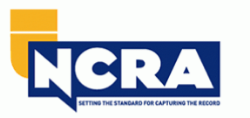Trial Presentation Designing Impactful Displays for Courtroom Success
Astound the Court: Essential Components of a Powerful Trial Presentation
Vital components such as recognizing the audience, crafting a compelling narrative, and grasping verbal and non-verbal communication are crucial parts of an effective discussion. As these factors intertwine, they create a cohesive approach that not only notifies but additionally engages jurors on multiple degrees.

Comprehending Your Target Market
Comprehending your audience is a crucial aspect of effective test presentation. An effective discussion hinges on the capacity to grasp the demographics, worths, and tendencies of jurors. This understanding educates exactly how disagreements are mounted, evidence exists, and emotional allures are crafted, guaranteeing that the message reverberates with the jurors on a personal degree.
Research indicates that jurors come from diverse histories and might have varying degrees of recognizing regarding lawful process. In addition, recognizing the jurors' possible predispositions and life experiences allows the trial speaker to prepare for arguments and address problems proactively.
Effective test discussion additionally involves observing jurors' reactions during the proceedings. Involving with jurors as individuals rather than a cumulative device is important in fostering a strong connection in the court.

Crafting an Engaging Story
Crafting a compelling story is vital in directing jurors with the intricacies of a situation. A well-structured story not only streamlines intricate legal principles but additionally engages jurors on a psychological degree, making the info much more relatable and memorable.
To achieve this, lawyers should begin by identifying the core message they want to convey. This message must reverberate with the jurors' values and experiences, fostering a link that transcends mere realities. The story must unravel realistically, providing occasions in a clear sequence to prevent confusion. This chronological method can aid jurors follow the progression of events, emphasizing domino effect.
Incorporating human elements-- such as personal tales or narratives-- can additionally boost the narrative's impact. These elements evoke empathy, permitting jurors to envision the repercussions of the case on realities. In addition, utilizing a consistent theme throughout the discussion enhances the major argument, making it easier for jurors to maintain crucial points.
Inevitably, an engaging narrative transforms a test presentation from a mere recitation of realities into a convincing story that captivates the court, motivating them to mull over with both factor and emotion.
Making Use Of Aesthetic Aids
Including aesthetic help into a trial presentation can significantly boost jurors' understanding and retention of information. Aesthetic products such as graphes, representations, photos, and video clips can transform intricate lawful principles and proof into conveniently digestible styles. By involving multiple detects, these help allow jurors to visualize the situation's vital elements, making it easier for them to adhere to along and grasp complex details.
Additionally, properly designed aesthetic aids can stress crucial points and emphasize partnerships between various items of proof. Timelines can efficiently highlight the series of occasions, while annotated photos can make clear certain information appropriate to the case. This not just aids in understanding however likewise enhances the narrative presented by the attorney.
Overly complicated or cluttered visuals might overwhelm jurors and take away from the message. Eventually, effective visual communication can be a powerful device in persuading jurors and aiding them get to informed verdicts.
Mastering Verbal Interaction
Reliable spoken communication is important in a test presentation, as it acts as the main means whereby attorneys convey their arguments and link with jurors. Mastering this ability entails clarity, persuasion, and engagement. Attorneys must verbalize their points clearly and briefly, preventing legal jargon that might confuse jurors. Simpleness in language cultivates understanding and aids jurors realize complex concerns provided throughout the test.
In addition, tone and pacing substantially impact exactly how messages are received. A confident tone communicates authority, while appropriate pacing enables jurors to soak up info without really explanation feeling bewildered. Attorneys need to also differ their singing inflections to highlight bottom lines and maintain jurors' passion throughout the discussion.
In addition, the organization of verbal arguments is crucial. Structuring the narrative realistically and coherently aids jurors comply with the lawyer's line of thinking, making it easier for them to keep critical information. Making use of influential strategies, such as storytelling, can also boost the psychological vibration of the arguments provided, thereby creating a more profound link with jurors.
Eventually, understanding spoken communication not only strengthens a lawyer's case but additionally promotes trust fund and rapport with the court, substantially boosting the possibilities of a positive verdict.

Involving With Body Movement
Nonverbal interaction plays a vital role in trial discussions, frequently communicating messages that words alone can not share. Body movement, incorporating gestures, pose, faces, and eye call, significantly affects just how jurors regard the reputation and genuineness of the presenter. A confident position, with shoulders back and an open pose, can instill count on, while closed-off body language may suggest defensiveness or uncertainty.

Facial expressions ought to mirror the feelings related to the situation, reinforcing the narrative being provided. For example, a genuine expression throughout an emotional minute can evoke compassion and strengthen the sob story. Eventually, grasping body language is necessary for reliable trial discussions, as it enhances spoken communication and establishes a compelling visibility that reverberates with visit this site the court.
Verdict
Finally, astounding the jury necessitates a strategic approach that includes recognizing the target market, crafting a compelling story, utilizing aesthetic help, understanding verbal interaction, and involving with body movement. Each component plays a critical role in developing a powerful trial discussion that resonates with jurors on both psychological and intellectual degrees (trial presentation). By incorporating these parts properly, lawyers can significantly improve their capability to convince and affect court decision-making